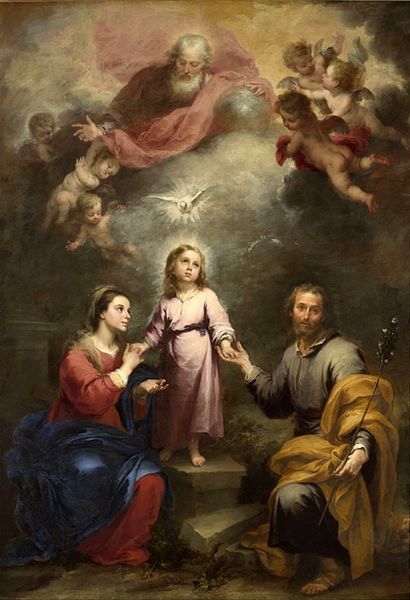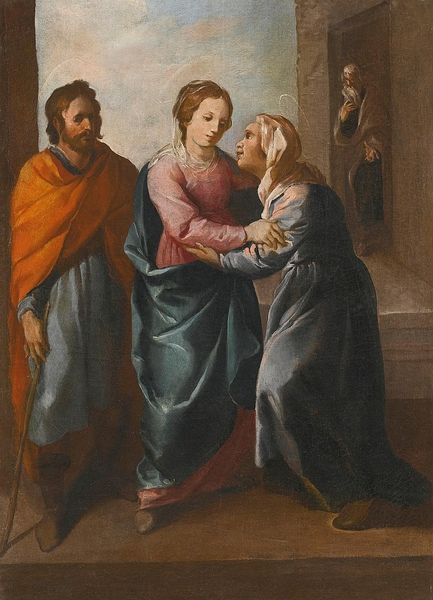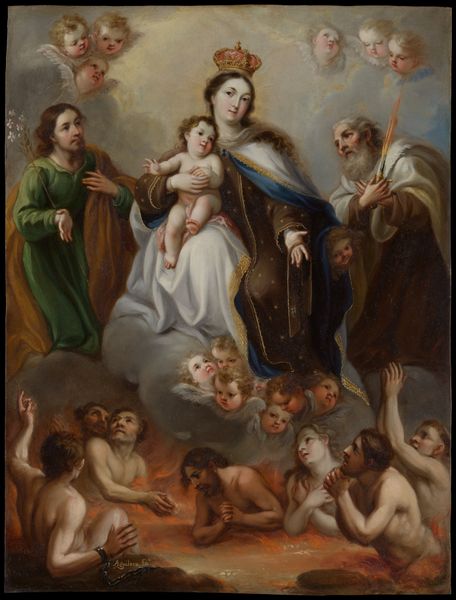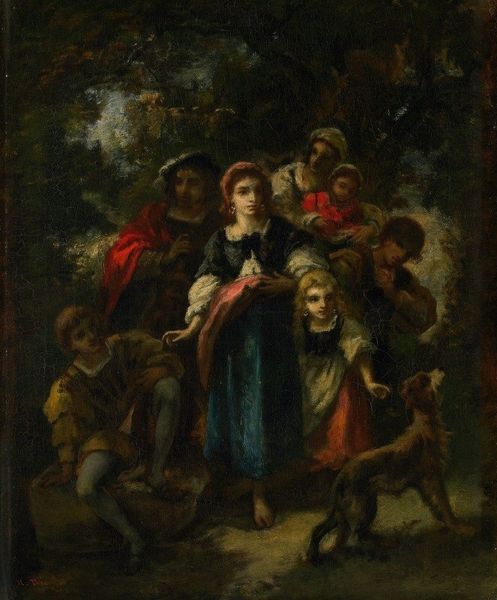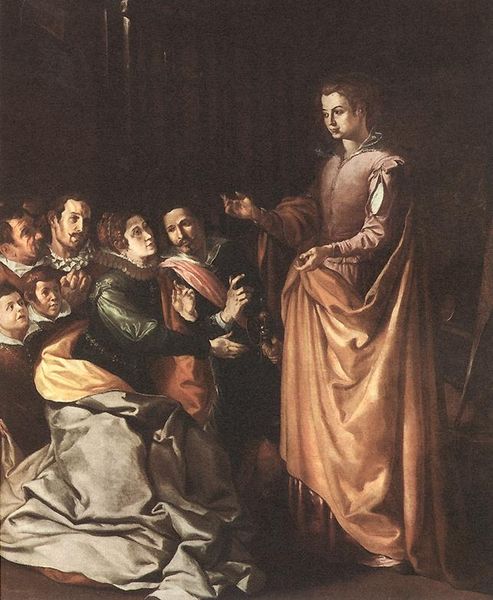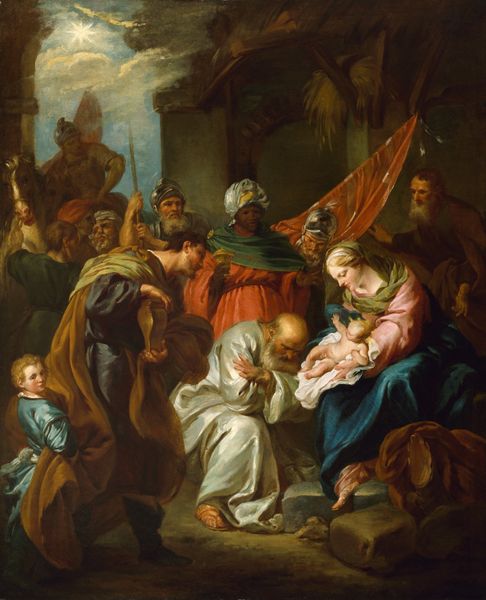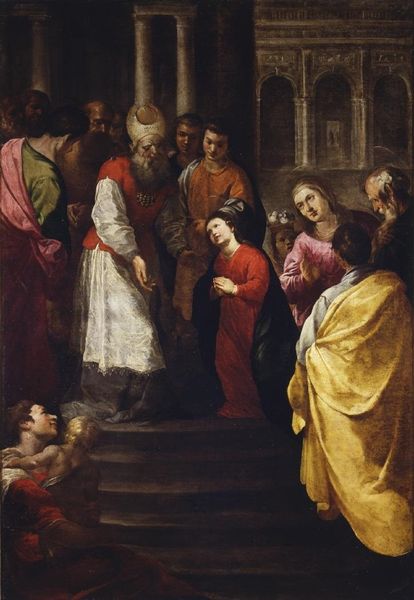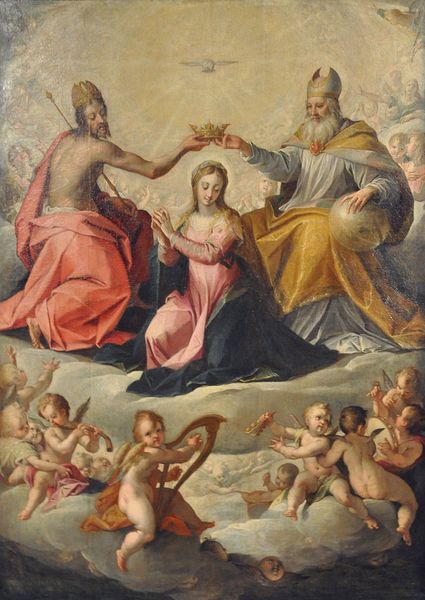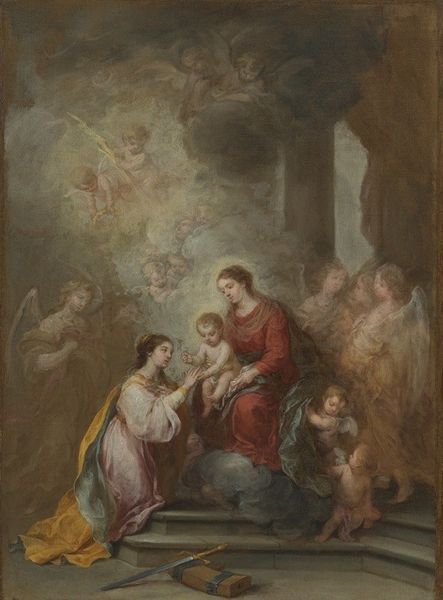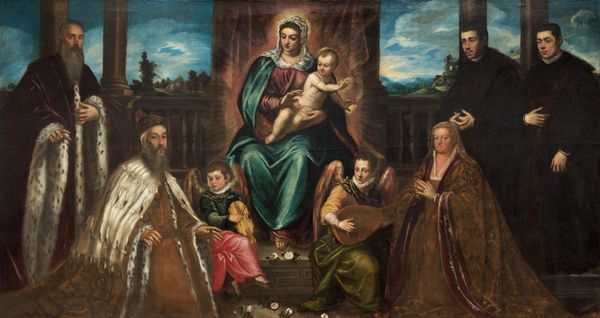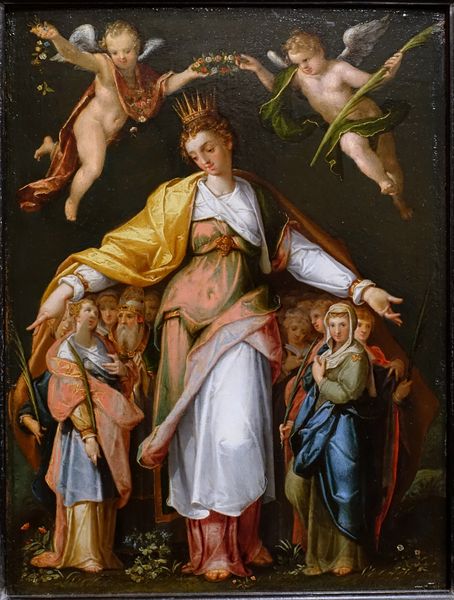
painting, oil-paint
#
baroque
#
painting
#
oil-paint
#
figuration
#
history-painting
Copyright: Public domain
Curator: Here we have Miguel Cabrera's "The Marriage of the Virgin," an oil painting dating to 1737. What's your initial sense of this work? Editor: It feels almost dreamlike, the faces softened and halos nearly dissolving. There's a tenderness in the muted color palette despite the somewhat rigid composition, quite moving, actually. Curator: Dreamlike is a great way to put it. Cabrera, a hugely important artist in colonial Mexico, clearly plays with conventions here, softening what could be quite a stern theological subject. Technically, notice the carefully constructed pyramid of figures around the central pair. Editor: The light too—that dove overhead isn’t just a symbol. The way Cabrera renders it, the holy spirit feels less like a statement of doctrine and more like a whisper, influencing the tonality of the whole scene. Curator: Exactly! It’s not simply illustrative but atmospheric, almost tactile. The baroque loved that interplay of surface and symbol. And consider the way Saint Joseph tenderly places the ring, a symbol that marks not just social contract, but profound transformation in both their lives. It's that balance he strikes that elevates the work beyond just historical record, isn't it? Editor: Absolutely. You feel this piece in your bones. It uses such formality to get into the deepest levels of the human spirit. It has that magical power of the Baroque era. It shows what paintings do that other art can’t. Curator: Cabrera does this through impeccable form; others find this truth with messier means, I think. Well, whether or not "messy" or formal, one must reflect what art is meant to do, right? And that reflection is where that truth exists. Thanks for exploring this piece with me! Editor: It’s been illuminating; these hidden formal geometries help so much to see why paintings move us as they do!
Comments
No comments
Be the first to comment and join the conversation on the ultimate creative platform.

